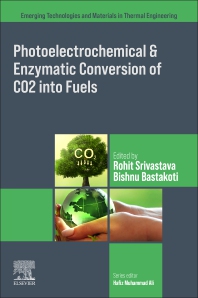Books in Energy and power
Books in Energy and power
Elsevier’s Energy and Power Collection offers the latest innovations in the energy transition with a focus on content that supports and advances the reduction of CO2 emissions. The collection includes content on solar, wind, geothermal, nuclear, biofuels and bioenergy, hydrogen and fuel cells, and addresses topics such as energy storage, efficiency, management, economics, and policy, among others.
- 1st Edition
- November 1, 2025
- Marcos Tostado-Véliz + 3 more
- English
- Paperback9 7 8 0 4 4 3 3 6 4 5 9 4
- eBook9 7 8 0 4 4 3 3 6 4 6 0 0

Energy Communities
- 1st Edition
- November 1, 2025
- Paul Pastusek + 2 more
- English
- Paperback9 7 8 0 4 4 3 3 6 7 7 9 3
- eBook9 7 8 0 4 4 3 3 6 7 8 0 9

Drill Bits for Energy Industry
- 1st Edition
- November 1, 2025
- Alexandros Arsalis + 8 more
- English
- Paperback9 7 8 0 4 4 3 4 0 3 0 2 6
- eBook9 7 8 0 4 4 3 4 0 3 0 3 3

Green Hydrogen Energy Systems
- 1st Edition
- November 1, 2025
- Mehrzad Shams + 1 more
- English
- Paperback9 7 8 0 4 4 3 4 0 3 5 6 9
- eBook9 7 8 0 4 4 3 4 0 3 5 7 6

PEM Fuel Cells Performance
- 1st Edition
- October 1, 2025
- Ming-Fei Li
- English
- Paperback9 7 8 0 4 4 3 2 4 7 1 4 9
- eBook9 7 8 0 4 4 3 2 4 7 1 5 6

Pretreatment of Lignocellulosic Biomass for Bioenergy Production
- 1st Edition
- October 1, 2025
- Abdul Ghani Olabi
- English
- Paperback9 7 8 0 4 4 3 2 9 0 5 6 5
- eBook9 7 8 0 4 4 3 2 9 0 5 7 2

Renewable Energy - Volume 4: Energy Storage Systems - Mechanical, Hydro, and Thermal
- 1st Edition
- Volume 1
- October 1, 2025
- Balasubramani Ravindran + 2 more
- English
- Paperback9 7 8 0 4 4 3 2 9 2 7 5 0
- eBook9 7 8 0 4 4 3 2 9 2 7 6 7

Transformation of Solid Waste to Energy
- 1st Edition
- October 1, 2025
- Rohit Srivastava + 1 more
- English
- Paperback9 7 8 0 4 4 3 2 9 2 8 5 9
- eBook9 7 8 0 4 4 3 2 9 2 8 6 6

Photoelectrochemical and Enzymatic Conversion of CO2 into Fuels
- 1st Edition
- October 1, 2025
- Hui Xu + 2 more
- English
- Paperback9 7 8 0 4 4 3 2 9 2 9 5 8
- eBook9 7 8 0 4 4 3 2 9 2 9 6 5

Renewable Photocatalysts
- 1st Edition
- October 1, 2025
- Abdul Ghani Olabi
- English
- Paperback9 7 8 0 4 4 3 2 9 8 7 5 2
- eBook9 7 8 0 4 4 3 2 9 8 7 6 9
